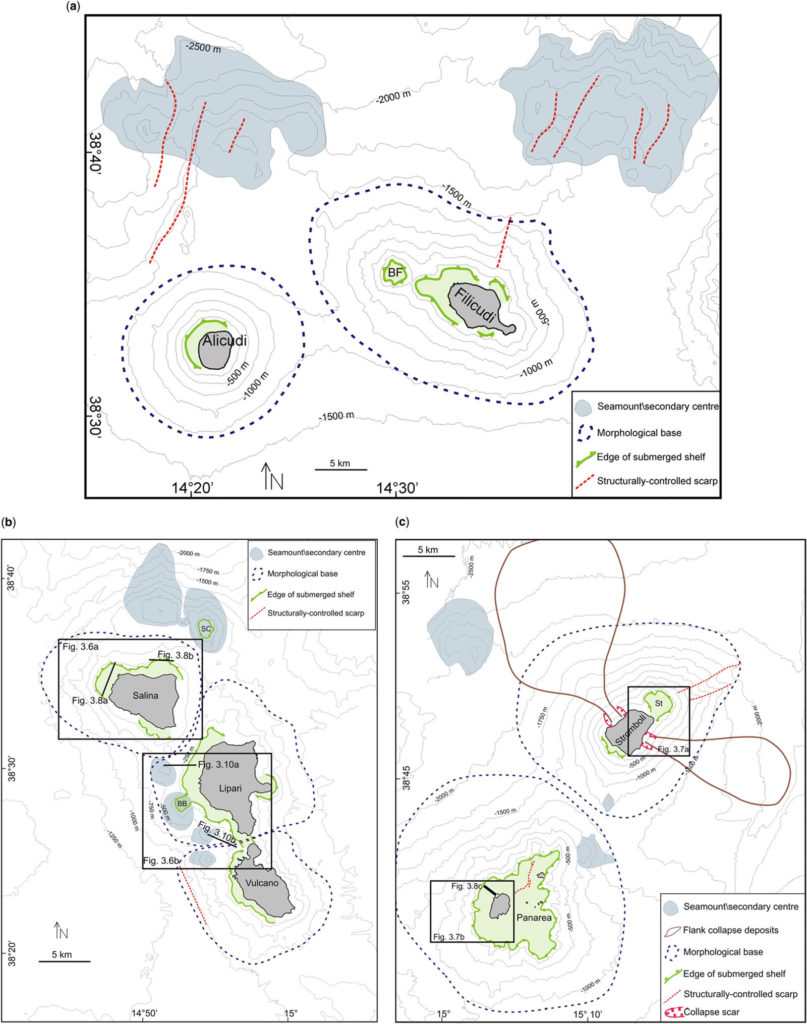The processes that lead to the formation of an island in its final configuration are quite complex. They are the result of continuous “building” activity, alternating, however, with long periods of dormant volcanic activity, even lasting around tens of thousands of years. During these moments of pause in the volcanic island’s expansion, called stasis, “destructive” processes occur. These are erosive phenomena caused by the main atmospheric agents, such as the sea and the wind.
Sea erosion in the presence of strong slopes can create super low-incline platforms: in fact, the sea slowly erodes at the same height, digging a “wave-cut notch” and making everything above unstable, until it collapses. The end result is that the escarpment is moved back in a parallel manner, which does not change its profile, and a platform forms at its base.

This pictur shows how these platforms formed in the western and northern part of each island. This was caused by the dominant winds and seas in the Aeolian Islands. The most frequent and most energetic are those of tramontane from the north, mistral from the north-west and ponente from the west. For these reasons all the main ports on each island are on the eastern side, which is protected from the west winds by the mountain.